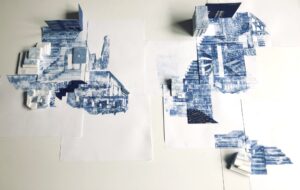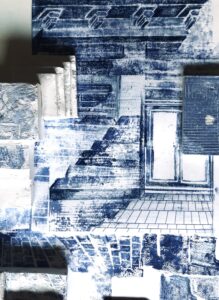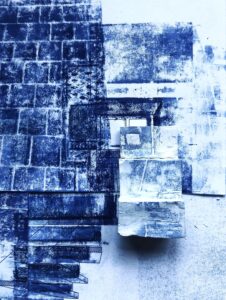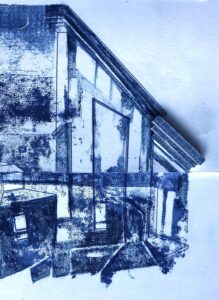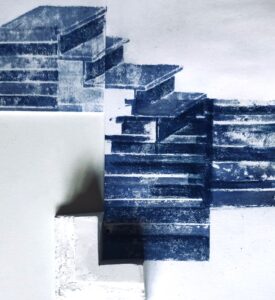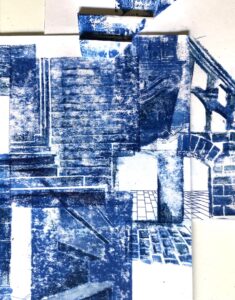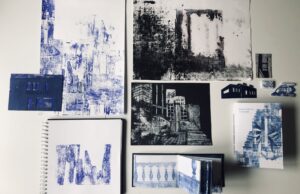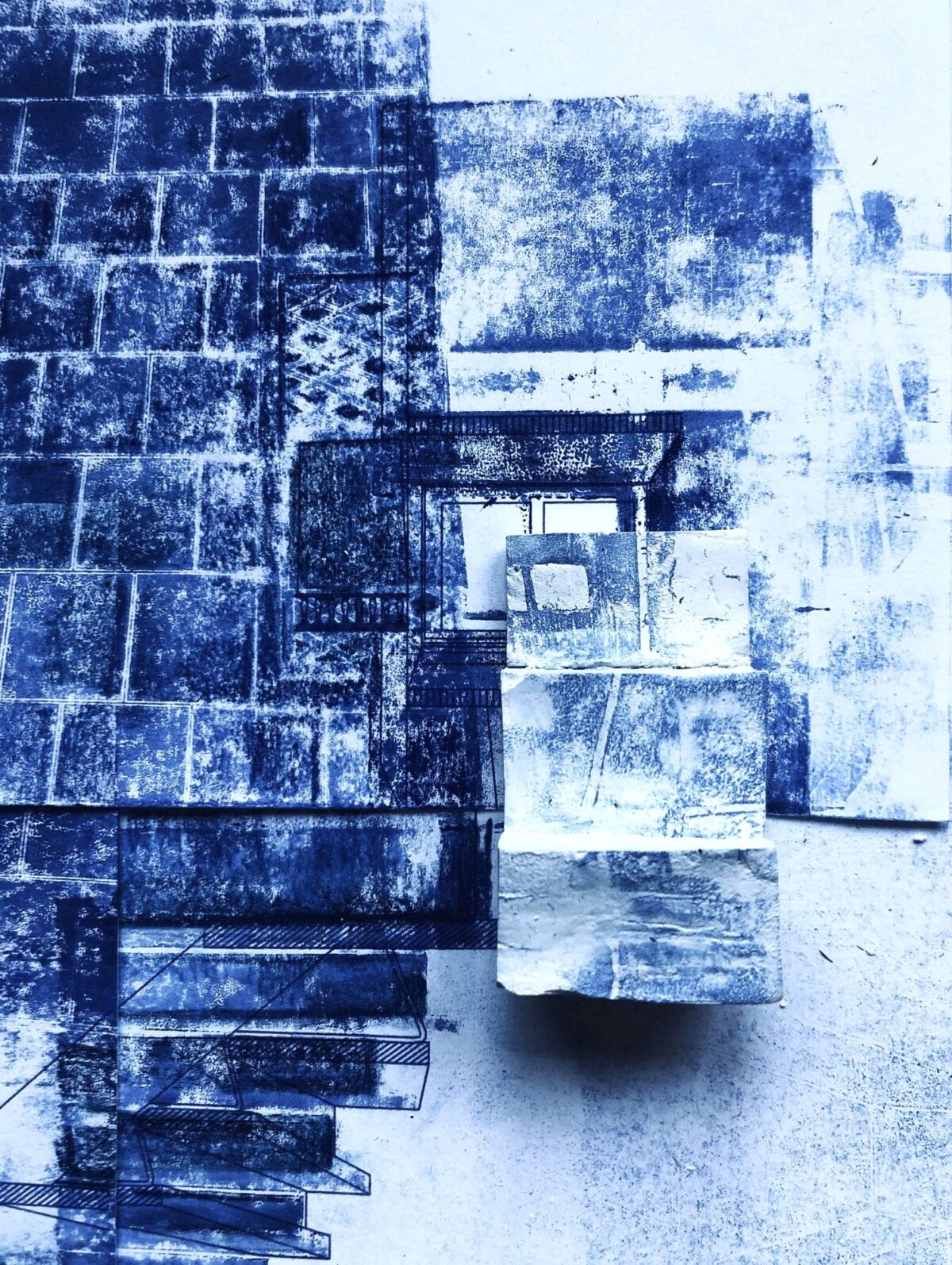Throughout this booklet, you’ll discover my process of redefining an existing city.
When I’m walking, different things in a cityscape catch my eye. It can be a detail of
a doorknob, stairs that flow into a threshold, or how a façade can bump into a
neighbouring roof. In my mind, these elements are taken out of their context and
are isolated. I don’t really notice the surroundings anymore. I used this exercise of
exclusion in my one-minute site.
I was fascinated by these fragments that were taken out of their context. Because
by taking them out of the context, they can suggest new meanings. They can
create new relations with other isolated fragments. That’s where my hybrid
cityscape started to happen.
I experimented with the method of printing cardboard cutouts with ink. This
resulted in textured drawings, where the texture creates depth in the isolated
fragments. In my work, I combined, repositioned, and scaled different fragments
that catch my eye. The source objects are always pictures taken on walks, but
with this method of printing, I can create and translate a whole new personal
cityscape.
For me, the most interesting moments happen when fragments of different scales
meet each other, or when different perspectives can give a whole new
understanding to a fragment. The positioning of fragments allows new spaces to
exist.
These new spaces were first created on paper, by printing cutouts of cardboard
with ink and linking them together. These resulting drawings inspired me to
vectorize my work. I used these digital drawings to add another layer to the
manually printed drawings. These 2D spaces inspired me to recreate pieces in 3D
models. They are again a translation, but also an addition to the already existing
work. Then the cycle can continue: I can make new cutouts, inspired by the
models, which inspire me to make and add new layers, relations and spaces, in
2D and 3D. All of this results in architectural blueprints of a cityscape.
